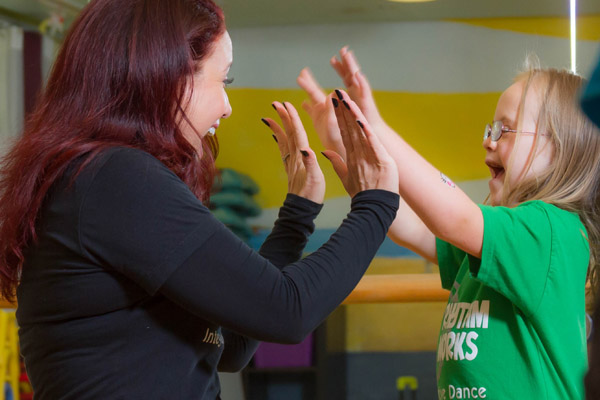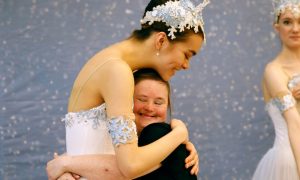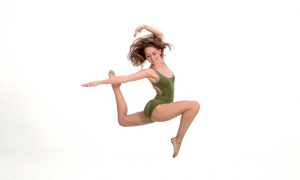As Joe Tremaine says, “Dance training is life training.” The hours and years of blood, sweat and tears training in the dance studio not only helps dancers perfect their battements and pirouettes, but it also teaches them valuable skills preparing individuals for the “real” world.
Dance teaches students patience, hard work, teamwork, respect, time management, confidence and more. For those with special needs, dance training is changing their lives each class.
While developing Rhythm Works Integrative Dance after experiencing a traumatic life event, Tricia Gomez hoped her program would help individuals with autism. She took a lot of therapy classes and learned how rhythm affects the brain. In time, she realized her research and the work she was developing could assist anyone.
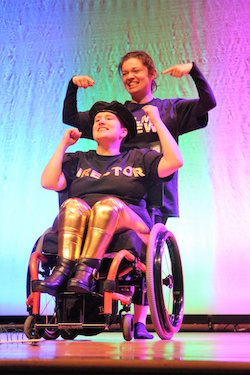
“Sound, movement and timing happening at the same time lights up different parts of the brain, which then talk to each other when they don’t typically talk to each other,” Gomez shares with Dance Informa. “Kids with broken pathways have areas that start lighting up and override some of their deficits.”
Her research shows cognitive processing improves speed, interaction and motor skills. “Dance, at first, is hard, but it introduces new pathways in the brain,” she says. “As you repeat it, it gets easier and easier.”
Through her program, she noticed students who were plateauing in achieving their goals through therapy were able to achieve them through dance.
“We look at therapeutic goals and all of the underlying skills necessary to do it,” Gomez explains. “We look at the task and couple it with movement. We practice their skills in a rhythmic way, which lights up the brain, and the kids start achieving their goals. You’re re-training the brain to be more efficient. The mind is plastic. Anybody can learn anything at any time.”
Like Gomez, Robin Bishop and Christine Dwyer wanted to provide opportunities to students with special needs in Buffalo, NY and opened their own studio, Danceability.
“We wanted to give our dancers the same kind of dance education that we received,” Bishop shares. “Dance teachers are wonderful people, but they’re not always warm and fuzzy. They’re the ones who tell you, ‘You need to do this; you’re stronger than that.’ Just because these dancers have special needs doesn’t mean we don’t hold them to a high expectation.”
While observing Danceability evolve and grow since opening in 2007, Bishop noticed the studio is not just an activity or a place for people to dance. “The things we do in class translates into their regular lives right down to them putting their own shoes on or appropriate social boundaries, having a healthy body or being creative,” she says. Some of these skills include socialization, following a structure, having impulse control and recalling/memory. “We have been told we’re the activity that will take these individuals when others won’t.”
It’s not just the student improving but also the family as a whole. In fact, one thing Bishop, a former social worker, believes is of great importance at her studio is connecting her families to one another, especially during a time of struggle.
“We know or overhear a parent struggling with something with their child and know someone in another class has just gone through the same thing,” Bishop shares. “We do our best to connect them because they understand what the other is going through. We try to do that as much as we can to connect families.”
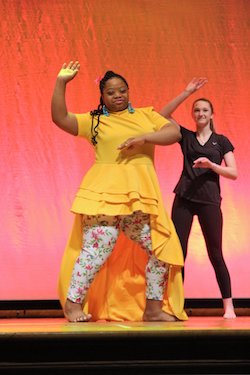
“The number one thing with special populations and working with kids who have differential needs is to let families know their teachers are trained and certified and they understand the process,” Gomez says. “They’re not going to give up on your kid.”
One of her favorite teaching moments to date came from when Gomez taught an 11-year-old boy with autism, who was taking class alongside his sister. The little boy loved going to Legoland but had a hard time standing in line. After adding dance to their routine, the next time the family went to Legoland, the siblings started working on their dance steps in line and before they knew it, it was their turn to go on the ride.
Another favorite memory that comes to Gomez’s mind is about a student she worked with who was three years old, but developmentally was 18 months. He struggled with jumping and started taking a mommy-and-me class. “One day, we were in class, and the boy jumped,” Gomez recalls. “The mom nearly fell down to the floor. We were all in tears.” For the next week, the mother was sending Gomez videos of the boy jumping all over the place.
“Dance changed how he can participate in things. Something we consider small was a big deal for his family,” Gomez says. “When awesome things happen, we tear up. Hundreds of miracles happen each class. This is life-changing stuff we are doing.”
For more information on Rhythm Works Integrative Dance and Danceability, visit danceinabox.com/pages/rhythm-works-integrative-dance and danceabilityinc.org.
By Lauren Kirchmyer of Dance Informa.


